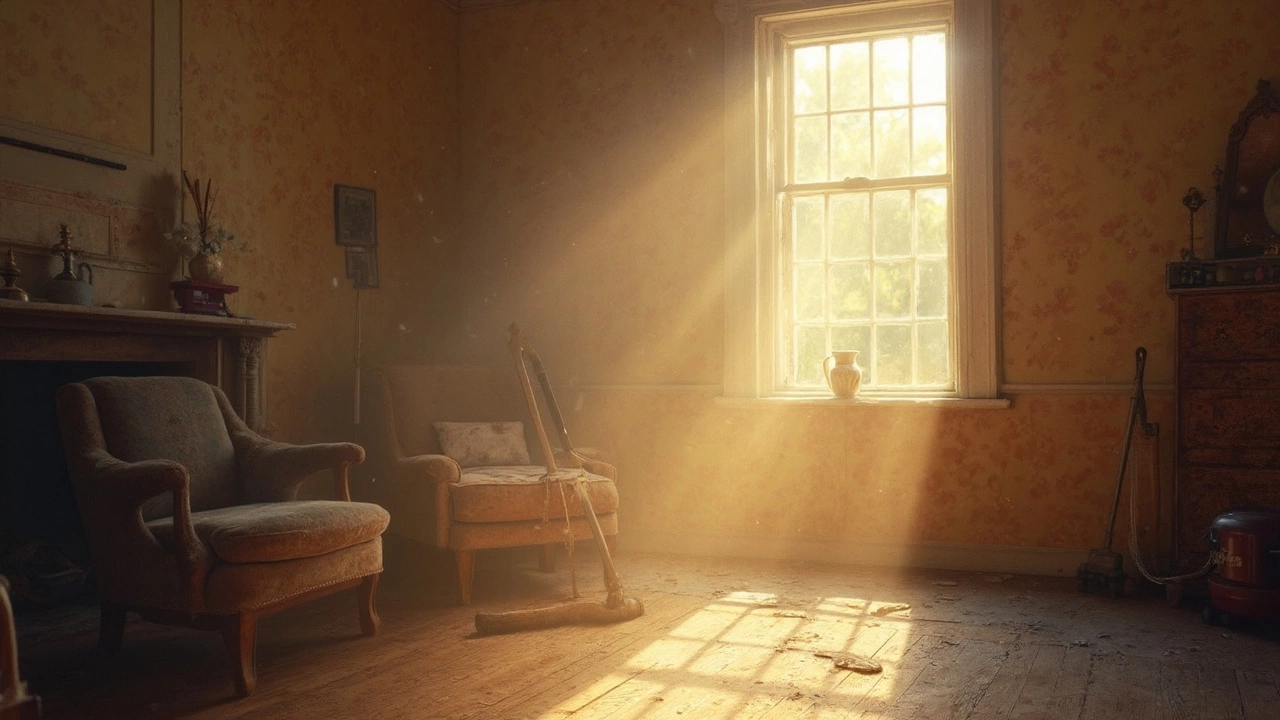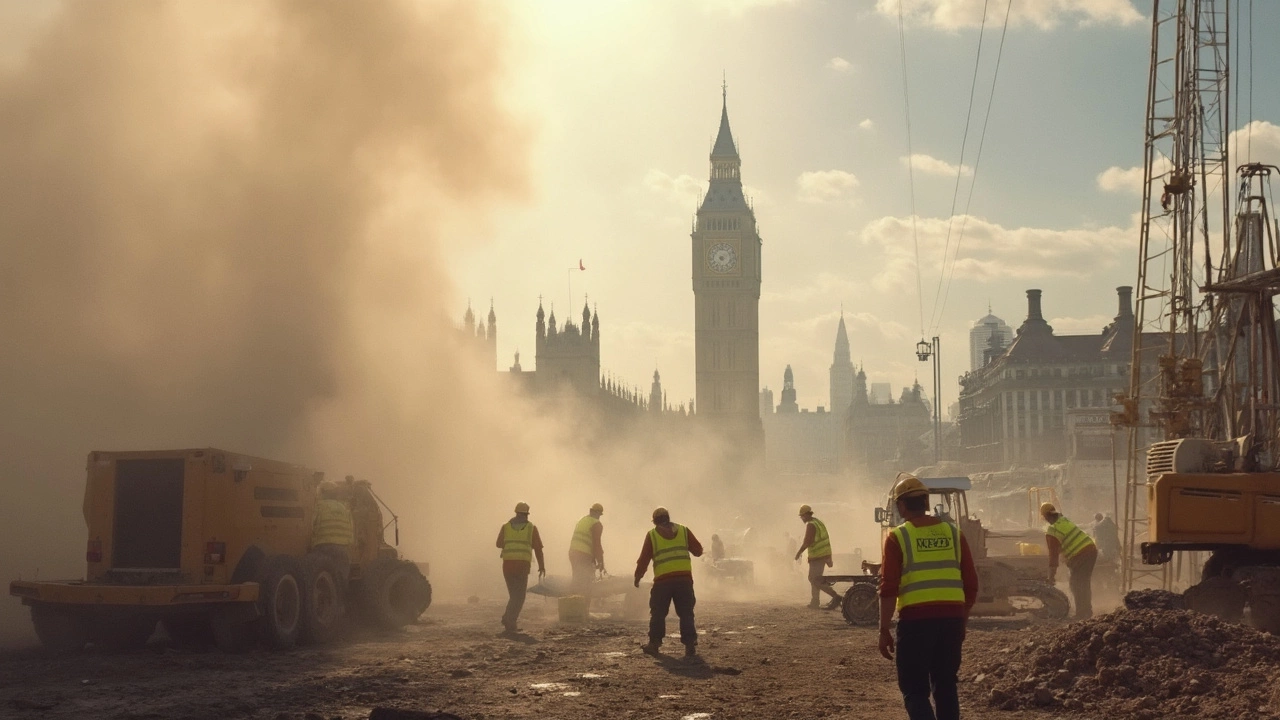So, you've just wrapped up that big construction project, and now you're left with a layer of dust that seems to be everywhere. You might wonder, how long does it actually take before this dust finally decides to rest? Well, the truth is, construction dust can hang around longer than you'd expect, but don't worry, there's a lot you can do about it.
The time it takes for dust to settle often depends on a mix of factors like ventilation, humidity, and how much movement there is in the area. A room with good airflow usually sees dust settling faster, so it might be a good idea to get those windows open or fans going.
Humidity is another key player. Dust tends to linger longer in dry conditions, while a bit of moisture in the air can help it settle quicker. So, depending on where you are, consider running a humidifier for a bit more control over the situation.
By acting quickly with some targeted cleaning, you can make short work of that pesky dust and have your space back to its pre-construction glory in no time. Stay tuned as we unpack more about dealing with construction dust efficiently!
- What Makes Dust Settle?
- Factors Affecting Settling Time
- Tips for Quick Settling
- Cleaning Up After Construction
What Makes Dust Settle?
Ever wondered why dust eventually hits the ground and stops making everything look a bit foggy? It's all down to a few pretty basic science factors. First up, there's gravity—pretty straightforward, right? Dust particles are tiny, but gravity still pulls them down toward the floor, even if they don't always seem to be in much of a hurry.
Another thing to consider is air circulation. If you've got fans or air conditioning running, the air is moving, and it can keep those dusty bits floating around longer. When the air is still, though, dust has a better chance of settling down faster.
But wait, there's more! Humidity plays a sneaky part too. Humid air is heavier than dry air, which can help push dust down. Conversely, in dry conditions, dust tends to hang around longer.
Particles and Weight
The size and weight of the dust particles matter as well. Heavier particles, like bits of plaster or cement you often see in construction dust, settle quicker. Smaller, lighter particles, however, can float around longer.
The Role of Environment
Where you are makes a difference too. If you're in a sealed room with little airflow, dust will naturally settle faster compared to an open area with lots of movement.
| Factor | Effect on Dust Settling |
|---|---|
| Gravity | Always pulling dust towards the ground |
| Air Circulation | Can keep dust suspended if air is moving |
| Humidity | Heavier air helps dust settle faster |
| Particle Size | Larger particles settle faster |
| Room Environment | Less airflow leads to faster settling |
So next time you find yourself staring at that frustrating layer of post-construction fuzz, you'll have a better idea of what's going on. And with a few adjustments, like tweaking air circulation or turning up the humidity, you'll know just how to help that dust find its way to the floor and out of your life a bit quicker.
Factors Affecting Settling Time
Ever wonder why that construction dust seems to linger eternally in one room but settles quickly in another? A couple of key things play into how fast or slow dust decides to drop to the ground. Let's break it down so you can tackle it more effectively.
Ventilation: Airflow is King
The quicker air moves through a space, the faster dust is likely to settle. Opening windows and using fans can do wonders by pushing the dust particles downwards or out altogether. Remember, stagnant air makes for a dust heaven, while fresh air can help it move on faster.
Humidity Levels: Dry as a Desert?
Believe it or not, the humidity in the room can change everything. Dust tends to stay afloat longer in dry air. Using a humidifier can not only make your skin feel great but also helps the construction dust to settle more rapidly. Aim for a moderate level of humidity for best results.
Activity and Movement
The more activity – like you constantly walking back and forth – the more likely the dust will settle again right as it's kicked up. Try to limit movement in dusty spaces until you've properly aired it out.
| Factor | Impact on Dust Settling |
|---|---|
| High Ventilation | Faster settling time |
| High Humidity | Faster settling time |
| High Movement | Slower settling time |
Knowing these factors can make managing your post-construction cleaning a whole lot simpler. By adapting your environment, you can deal with that pesky construction dust more effectively. Next up, we'll give you some tips on how to speed this process along even more.

Tips for Quick Settling
Getting rid of construction dust doesn't have to be a marathon. With a few smart tips, you can speed up the settling process and reclaim your space.
Boosting Ventilation
If you're looking to get that dust down in record time, your first move should be to crank up the airflow. Open windows and doors to create a cross breeze. If natural ventilation is limited, fans are your best friends. Place them strategically to push air towards exits.
Managing Humidity
Believe it or not, a little moisture in the air can do wonders. Running a humidifier can help by making the dust particles heavier, urging them to settle faster. Aim for a relative humidity of around 40-50%, which is comfortable without being too damp.
Minimizing Movement
Limit body traffic in dusty areas. More movement means more dust stirred up, which prolongs the settling time. Try to cordon off affected sections until the dust has had a chance to settle completely.
Strategic Cleaning
Once you've encouraged the dust to settle, it's time for action. Start with a gentle vacuum, using a model equipped with a HEPA filter to trap the tiniest particles. Avoid sweeping, as this just kicks up the dust again.
Regular Maintenance
Dust is sneaky. Even after your initial clean-up, it might still resurface. Keep cleaning supplies handy for quick touch-ups over the next few days to stay ahead of the game.
These handy tips should help you tackle that construction dust more effectively, leaving your home or workspace sparkling and clean in no time!
Cleaning Up After Construction
Tackling the mess left after construction can feel overwhelming, but with the right approach, your space can become dust-free and inviting in no time. First things first – start with a plan, because diving in without a roadmap can make the process longer and more disorganized.
Gather Your Supplies
Before you begin, make sure you have the essentials. Here’s a quick list to get you prepared:
- Vacuum Cleaner (Preferably with a HEPA filter to trap tiny dust particles)
- Microfiber Cloths or Mop (Great for picking up fine dust)
- All-Purpose Cleaner
- Bucket and Sponge
- Mask and Gloves (To protect yourself from inhaling dust)
Step-by-Step Cleanup Process
If you’re wondering where to start, try following these steps:
- Begin with Dry Cleaning: Use your vacuum or a broom to tackle large piles of debris and dust. Make sure to get into corners and tight spots.
- Damp Wipe All Surfaces: Dampen your microfiber cloth or mop to pick up any remaining dust on surfaces like countertops, windowsills, or floors.
- Pay Attention to Air Vents and Light Fixtures: Dust loves to collect in these spots, so give them a thorough wipe or vacuum.
- Wash Fabrics: Curtains, rugs, and any exposed upholstery can harbor construction dust. A good wash will help rid them of any lingering particles.
- Final Touch: Go over everything one more time with a damp cloth to ensure no speck is left behind.
Why It Matters
Cleaning after construction isn’t just about aesthetics; it’s vital for health, especially for those with allergies or asthma. You’ll notice the air feels fresher and the environment healthier once the dust is gone. Remember, the longer construction dust sits, the more it can affect your air quality.
There you have it! With these steps, your after builders cleaning task doesn't have to be daunting. It’s all about managing the dust and creating a space that’s ready for you to enjoy.
